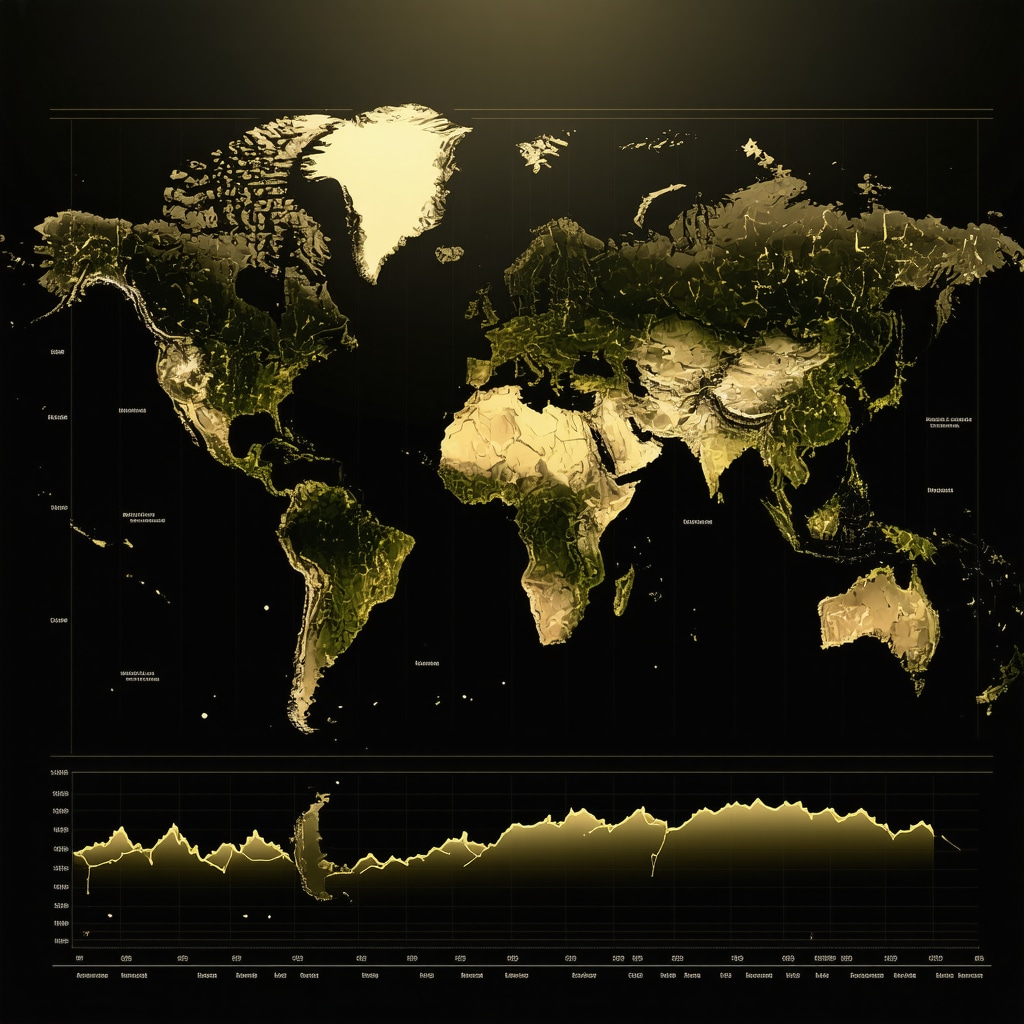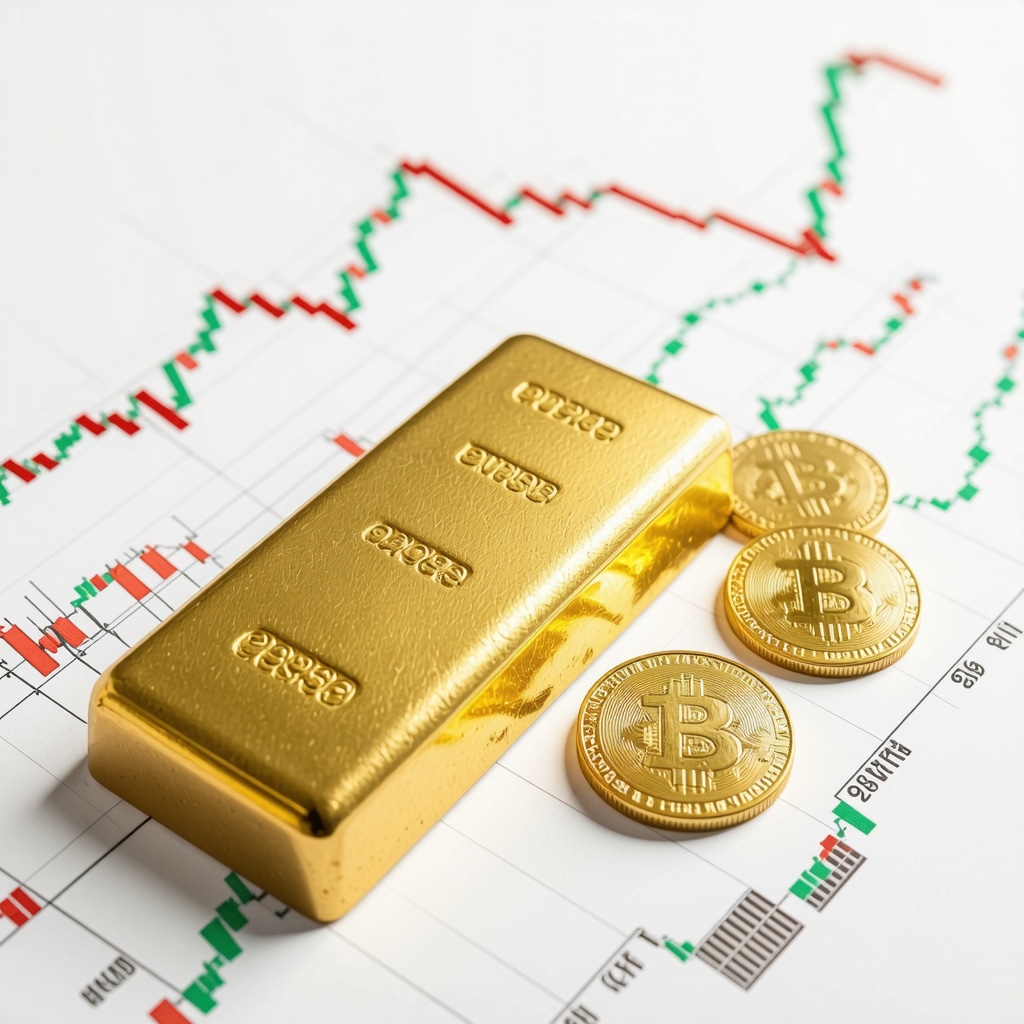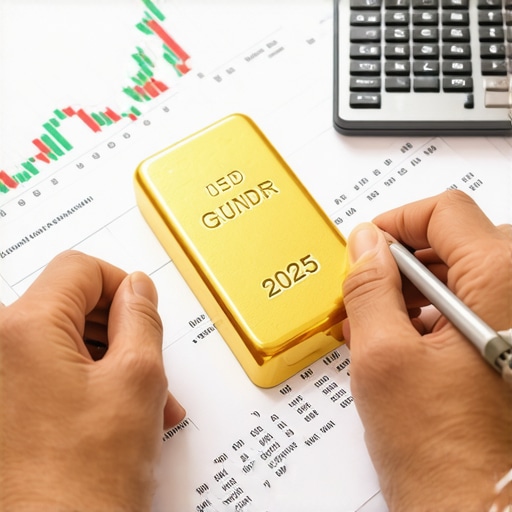Strategic Foundations of Gold Investment as an Inflation Hedge in 2025
In the rapidly evolving economic landscape of 2025, seasoned investors recognize gold not merely as a traditional safe haven but as a sophisticated component of a diversified inflation-hedging portfolio. The nuanced dynamics of global monetary policies, geopolitical tensions, and technological shifts necessitate an expert-level approach to gold investment, emphasizing strategic timing, asset selection, and market analysis.
Decoding the Complex Relationship Between Gold and Inflation
Gold’s role as an inflation hedge is rooted in its historical resilience and intrinsic value. According to recent studies published in the IMF Working Paper, during periods of monetary expansion, gold prices tend to correlate positively with inflation rates, underscoring its utility in real asset portfolios. However, understanding the subtle influences of currency fluctuations, interest rate policies, and supply-demand imbalances requires a deep analytical framework.
Emerging Trends and Investment Vehicles for 2025
How can modern investors leverage emerging gold investment vehicles to optimize inflation protection?
Innovative avenues such as gold ETFs, futures contracts, and digital gold platforms offer liquidity and flexibility. For instance, gold ETFs provide exposure without the logistical challenges of physical storage, while futures enable strategic leverage in volatile markets. Experts advise integrating these tools within a broader tactical asset allocation framework to adapt swiftly to market shifts.
In-Depth Market Analysis: Supply, Demand, and Policy Impacts
Understanding the intricate interplay of global supply chains, central bank policies, and industry demand is vital. As detailed in the latest market report, shifts in official gold reserves and industrial consumption significantly influence price trajectories. Investors should monitor macroeconomic indicators alongside geopolitical developments to anticipate potential price movements accurately.
Expert Techniques for Maximizing Gold Investment Returns in 2025
- Employ technical analysis to identify optimal entry and exit points based on market momentum indicators.
- Diversify across physical gold, ETFs, and mining stocks to mitigate sector-specific risks.
- Utilize leverage cautiously in futures trading to amplify gains during trending markets.
What complex factors should investors consider when timing gold purchases during geopolitical upheavals?
During geopolitical crises, gold prices often experience rapid appreciation driven by flight-to-safety behaviors. However, timing investments requires assessing the depth of political instability, currency devaluations, and the responsiveness of central bank interventions. Advanced investors leverage market timing techniques that combine macroeconomic analysis with real-time sentiment indicators.
For further insights into optimizing your gold investment strategy, explore our comprehensive beginners guide and contribute your expertise to the evolving discourse on wealth preservation in turbulent times.
Integrating Macroeconomic Indicators for Sophisticated Gold Investment Decisions
Modern investors aiming for optimal gold portfolio performance in 2025 must leverage a comprehensive set of macroeconomic indicators. Beyond traditional metrics like inflation rates and currency stability, analyzing global trade balances, sovereign debt levels, and interest rate differentials provides a nuanced understanding of gold price trajectories. For instance, tracking shifts in global supply and demand dynamics can unveil emerging opportunities or warning signals, empowering investors to adjust their strategies proactively.
Challenging Conventional Wisdom: Is Physical Gold Always Superior to Digital Assets?
While physical gold has long been regarded as the gold standard for wealth preservation, the rise of digital gold platforms and blockchain-based assets introduces new dimensions to diversification. Experts argue that, in certain scenarios, digital gold offers unparalleled liquidity and accessibility, especially during geopolitical upheavals or supply chain disruptions. However, questions about security, regulatory oversight, and long-term storage costs persist. A balanced approach, combining physical gold with digital alternatives like digital gold services, can optimize resilience and flexibility in turbulent markets.
What role does geopolitical risk assessment play in refining gold investment tactics?
Geopolitical tensions significantly influence gold prices, often triggering swift surges during crises. Advanced investors utilize comprehensive geopolitical risk models that incorporate political stability indices, military conflicts, and diplomatic relations. These models, supported by data from organizations like the World Economic Forum, enable more precise timing of entry and exit points, minimizing downside exposure while capitalizing on upward momentum.
For an in-depth exploration of these techniques, consider reviewing our comprehensive guide to gold futures and integrating these insights into your strategic planning. Sharing your experiences and questions in the comments can foster collective learning and better preparedness for the complex landscape ahead.
Leveraging Complex Market Dynamics: The Interplay of Gold and Global Economic Indicators
To truly excel in gold investment strategy, it is imperative to understand how macroeconomic and microeconomic factors intertwine. For example, shifts in global trade balances, sovereign debt levels, and interest rate differentials can cause significant fluctuations in gold prices. Analyzing these variables through sophisticated econometric models, such as vector autoregression (VAR) or machine learning algorithms, allows investors to anticipate market movements with higher precision.
Furthermore, integrating real-time data feeds from sources like the World Bank’s Commodity Markets report or the IMF’s Financial Data platform enhances decision-making capabilities. Such comprehensive analysis not only refines timing but also helps identify emerging opportunities that may not be immediately apparent through traditional analysis.
How do macroeconomic variables influence the correlation between gold and inflation in turbulent markets?
During periods of economic instability, the correlation between gold and inflation often intensifies due to heightened risk aversion and currency devaluation. However, this relationship is nuanced; for instance, a surge in interest rates aimed at curbing inflation can temporarily suppress gold prices, as higher yields make fixed income investments more attractive. Advanced investors monitor these dynamics through economic models that incorporate variables such as Federal Reserve policy actions and European Central Bank policies, adjusting their portfolios accordingly.

Understanding the intricate relationship between macroeconomic indicators and gold prices requires a detailed visual representation. This image illustrates the interconnectedness of global economic variables influencing gold as an inflation hedge.
Innovative Financial Instruments: Beyond Traditional Gold Assets
As the financial landscape evolves, so too does the toolkit available to sophisticated investors. Digital assets like blockchain-backed gold tokens and smart contract-based ETFs offer unprecedented liquidity, transparency, and ease of access. These innovations are particularly crucial during geopolitical crises where physical gold transactions may be hindered by logistical or regulatory hurdles.
Moreover, emerging derivatives such as structured notes that embed gold exposure within broader macroeconomic strategies enable tailored risk-return profiles. Financial engineers are increasingly designing products that hedge against specific risk factors like currency swings or interest rate shocks, providing investors with bespoke solutions suited for complex market environments.
What are the key considerations for integrating digital gold assets into a diversified inflation protection portfolio?
Investors must evaluate security protocols, regulatory frameworks, and the underlying technology’s robustness. Ensuring custody solutions adhere to strict standards—such as those outlined by the U.S. Securities and Exchange Commission—is vital. Additionally, understanding the liquidity profiles and potential counterparty risks associated with digital gold platforms will inform prudent allocation decisions, especially during periods of heightened geopolitical tension.
For those seeking to deepen their expertise, engaging with industry reports from organizations like the World Gold Council can provide invaluable insights into the evolving landscape of gold assets and their strategic applications in inflation hedging.
Harnessing Quantitative Models to Forecast Gold Price Movements Amid Global Uncertainty
In the context of 2025’s tumultuous economic landscape, leveraging sophisticated quantitative models becomes indispensable for predicting gold price trajectories. Investors employ techniques such as machine learning algorithms, including random forests and neural networks, to analyze vast datasets encompassing macroeconomic indicators, geopolitical developments, and market sentiment. These models facilitate high-precision forecasts, enabling strategic entry and exit points that maximize returns while mitigating risks.
Deep Dive into the Role of Central Bank Policies on Gold Valuation Dynamics
Central banks’ monetary policies remain pivotal in shaping gold’s market behavior. Analyzing the nuanced impacts of quantitative easing, interest rate adjustments, and foreign reserve management reveals intricate correlations with gold prices. For instance, expansive monetary policies often lead to currency devaluation, prompting increased gold demand as a hedge. Advanced investors monitor policy signals from institutions like the Federal Reserve and the European Central Bank through real-time policy statements and market reactions, informing their tactical asset allocation.
What Are the Emerging Risks and Opportunities in Digital Gold Asset Classifications?
Digital gold assets—such as blockchain-backed tokens and decentralized finance (DeFi) platforms—are transforming traditional gold investing. These instruments offer liquidity, fractional ownership, and ease of transfer, which are particularly advantageous during geopolitical crises. However, they also introduce risks related to cybersecurity, regulatory uncertainty, and technological obsolescence. Analyzing the evolving regulatory landscape, as documented by the U.S. Securities and Exchange Commission, is critical for prudent allocation in this segment. Engaging with industry reports from entities like the World Gold Council provides insights into best practices and emerging standards.
How Can Investors Utilize Macro-Financial Stress Indicators to Enhance Gold Portfolio Resilience?
In the realm of macro-financial analysis, indicators such as the Financial Stress Index, credit spreads, and liquidity measures serve as early warning signals of systemic risk. During periods of heightened stress—like sovereign debt crises or banking sector vulnerabilities—gold often acts as a safe haven. Advanced investors incorporate these metrics into dynamic risk management frameworks, employing tools like stress testing and scenario analysis to adapt their portfolios proactively. Consulting platforms such as the IMF Data Portal ensures access to reliable, up-to-date information, facilitating informed decision-making.
Integrating Sovereign Wealth Fund Strategies for Long-Term Gold Holdings
Sovereign wealth funds (SWFs) increasingly incorporate gold into their diversified reserves, recognizing its strategic importance in safeguarding national wealth. These institutions employ macroeconomic analyses and geopolitical assessments to determine optimal allocation levels, often engaging in large-volume purchases during market dips. Studying SWF investment patterns, as detailed in reports from the Sovereign Wealth Fund Institute, offers valuable lessons for private investors aiming to emulate long-term, stability-focused strategies that leverage gold’s inflation-hedging properties.
How Do Geopolitical Risk Models Inform Optimal Timing for Gold Acquisition?
Integrating comprehensive geopolitical risk models—encompassing military conflicts, diplomatic tensions, and resource disputes—enables investors to anticipate sharp price movements. These models, supported by data from organizations such as the World Economic Forum, provide probabilistic assessments that refine timing strategies. Advanced traders combine such insights with sentiment analysis and real-time news feeds to execute swift, informed trades, thus capitalizing on volatility while minimizing downside exposure.
To deepen your mastery in these complex methodologies, explore specialized courses on econometric modeling and geopolitical risk analysis, and consider subscribing to analytical platforms like Bloomberg Markets.
Expert Insights & Advanced Considerations
1. Dynamic Portfolio Integration
Seasoned investors recognize that integrating gold through innovative vehicles like digital gold platforms and structured derivatives enhances flexibility and resilience, especially amid geopolitical uncertainties.
2. Macro-Driven Market Timing
Utilizing sophisticated macroeconomic models that incorporate data from organizations such as the IMF and World Bank allows for precise timing of gold purchases, maximizing inflation hedging benefits.
3. Quantitative Forecasting Techniques
Employing machine learning algorithms and econometric models provides high-accuracy forecasts of gold price movements, enabling strategic entry and exit points in turbulent markets.
4. Geopolitical Risk Modelling
Advanced risk assessment models that analyze military conflicts, diplomatic tensions, and resource disputes inform optimal timing for gold acquisitions, reducing downside exposure.
5. Supply-Demand Analytical Frameworks
Deep analysis of global supply chains, industrial demand, and central bank activities, supported by real-time data feeds, refines investment strategies in the complex 2025 landscape.
Curated Expert Resources
- World Gold Council: Offers comprehensive research and insights into gold market trends and strategic applications for investors.
- IMF Data Platform: Provides macroeconomic data crucial for analyzing global economic indicators influencing gold prices.
- Bloomberg Markets: Delivers real-time news, market analysis, and expert commentary on commodities and macroeconomic factors.
- Gold.org: The official site of the World Gold Council, featuring industry reports, demand-supply analysis, and investment strategies.
- Academic Journals on Econometrics: Source of advanced quantitative modeling techniques for market forecasting and risk assessment.
Final Expert Perspective
In 2025, mastering the intricate relationship between macroeconomic variables and gold prices is essential for sophisticated investors aiming to leverage gold as an inflation hedge. Integrating emerging financial instruments, leveraging advanced modeling techniques, and continuously refining risk assessment frameworks will be pivotal in navigating the complex economic landscape. To further deepen your expertise, consider engaging with authoritative resources and sharing insights with fellow professionals. Your strategic mastery today will define your resilience and success in the evolving gold market tomorrow.










